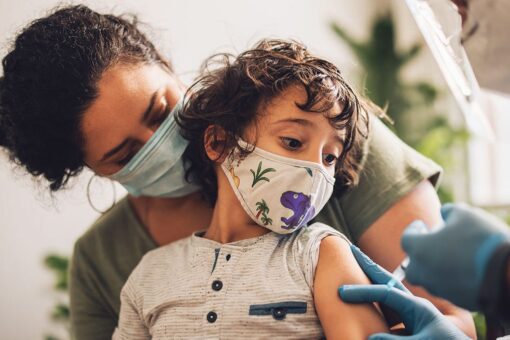NEWYou can now listen to Fox News articles!
Japan now has its first case of the new COVID-19 variant known as XE, which is a mixed strain of combined genetic information of omicron BA.1 variant and the “stealth” variant BA.2, according to a recent CNBC report.
“It is the devil we know, so to speak. [It is] essentially a reshuffling of the same deck of cards,” said Dr. Mark Cameron, associate professor in the School of Medicine at Case Western Reserve University.
PHILADELPHIA REIMPOSES INDOOR MASK MANDATE IN RESPONSE TO RISING OMICRON BA.2 CASES
XE was first detected in the U.K. on January 19, 2022, with cases of the new variant now almost doubling there, but it’s still only a small percentage of total cases in the country, according to the latest data from the U.K. Health Security Agency (UKHSA).
Since then, Thailand, India and Israel have also reported cases, but the United States has not detected any cases yet, according to CNBC.
“We continue to monitor cases of the recombinant XE variant in the U.K., which currently represents a very small proportion of cases,” said Meera Chand, director of clinical and emerging infections at UKHSA.
WHO TRACKING NEW OMICRON SUB-VARIANTS AMID US BA.2 SURGE
A “recombinant” strain is a type of variant that occurs when an individual becomes infected with two or more variants at the same time, per a recent U.K. statement.
The XE variant is recombinant, meaning that it is made up of two different variants which formed a new virus. It is likely that the XE variant emerged after someone contracted both BA.1 (original omicron strain) and BA.2 at the same time. Recombinants viruses happen frequently in nature.
((Photo by Costfoto/Future Publishing via Getty Images))
“Recombinant variants are not an unusual occurrence, particularly when there are several variants in circulation, and several have been identified over the course of the pandemic to date,” said Susan Hopkins, chief medical advisor of UKHSA.
“As with other kinds of variant[s], most will die off relatively quickly.”
Because viruses naturally mutate over time, recombinant strains are not surprising, so presently XE does not appear to be more effective at evading immunity from previous vaccination or prior COVID-19 infection compared with the previous strains, said Dr. Carlos Malvestutto, an infectious disease specialist at the Ohio State University Wexner Medical Center.
But the World Health Organization said XE is likely 10% more transmissible than BA.2, which is the predominant strain in the United States, responsible for 85.9% of all COVID-19 cases, according to the Centers for Disease Control and Prevention.
COVID-19: UK MONITORING HYBRID DELTA-OMICRON STRAIN CALLED ‘DELTACRON’
But Hopkins noted, “So far there is not enough evidence to draw conclusions about transmissibility, severity or vaccine effectiveness.”
Some experts argue, however, because XE is a combined strain of both BA.1 and BA.2 and vaccination protects against symptomatic disease for BA.1 and BA.2 strains, it is likely vaccination will also protect against symptomatic disease caused by XE, said Dr. Andrew
On Sunday, April 10, Dr. Anthony Fauci appeared on ABC’s “This Week” and said that the coronavirus “is not going to be eradicated and it’s not going to be eliminated. And what’s going to happen is that we’re going to see that each individual is going to have to make their calculation of the amount of risk that they want to take.”
((Screenshot YT: ABC News))
Badley, professor of infectious disease at the Mayo Clinic and chair of the COVID-19 Task Force for Mayo Clinic.
He also added: “We also know that the other therapies that are being used particularly in the outpatient setting–Paxlovid and molnupiravir–should, based on how they work, have continued activity against the XE strain.”
CLICK HERE TO GET THE FOX NEWS APP
But Bradley noted because some monoclonal antibody therapies are not effective against BA.1 and BA.2, it is likely those specific antibody treatments won’t work against XE either.
“The key takeaway is that for each of these variants and subvariants, risk of hospitalization and death appears to be, on average, lower where vaccination rates are higher, indicating that vaccination, including a third dose, should be effective in reducing risk for severe disease,” said Stephanie Silvera, professor of public health at Montclair State University.




